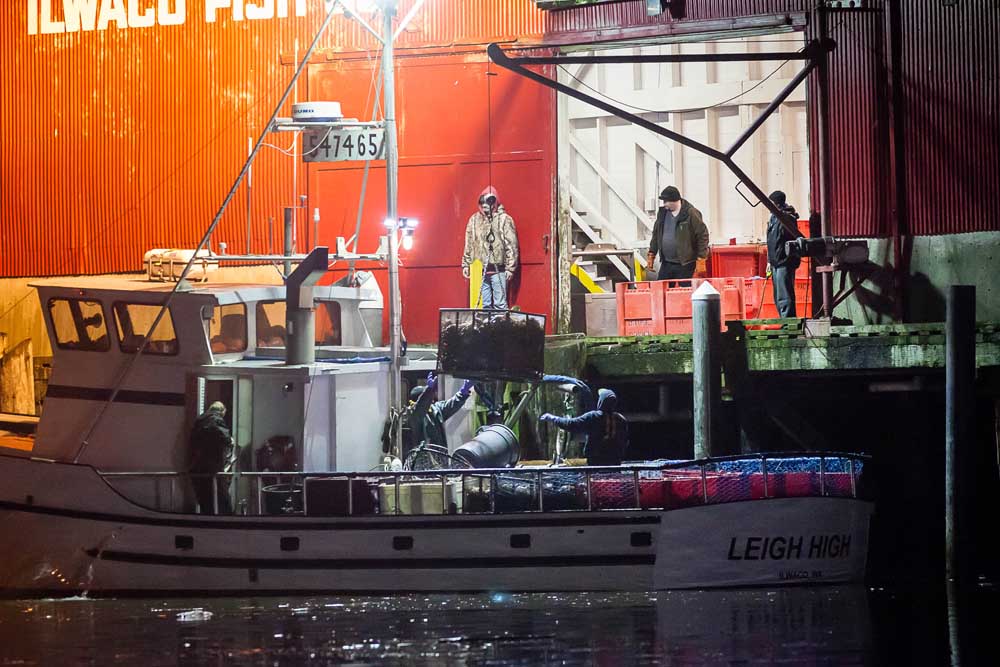Dungeness crab ‘meating up’ at slowest rate in years; also slow to harden
Published 1:29 pm Thursday, October 31, 2019

- Dungeness crab season, which opens in December or January each year, pumps millions of dollars into the Pacific Northwest’s coastal economy.
LONG BEACH — Dungeness crab in Long Beach Peninsula waters have the lowest percentage of meat in at least five years of late-October testing. More than 85% of local crab also are too soft to harvest. This is bad news for the traditional Dec. 1 opening date, which has often proved illusory in the past two decades.
Samples gathered Oct. 23 in the Long Beach test area had a meat-recovery rate of 19.1%. This compares to 20.9% in 2018, 19.9% in 2017, 23% in 2016 and 23.8% in 2015.
Samples from the Westport area collected on Oct. 24 had a recovery rate of 21%, compared to 19.7% in 2018, 20.2% in 2017, 22.9% in 2016 and 24% in 2015.
All areas must be at least 23% before a commercial crabbing season can commence under terms of the Tri-State protocol that governs crabbing in the waters of Washington, Oregon and California.
In another potential problem for a timely season start, Washington coast crab are especially slow to harden this autumn.
In Long Beach waters on Oct. 23, only 2.4% of sampled crab were in the highest 1A shell grade and 11% in the less desirable but still acceptable grade 1B. In late October last year, 15.3% were either grade 1A or 1B, and 34.7% were good grades in 2017.
Grade II crab — with some flex in both body and legs — are unmarketable. The Oct. 23 testing found 86.6% on Long Beach crab to be grade II, slightly worse than last year’s 84.8%. Tests in October 2017 found 65.3% were grade II. These past three rounds of October tests are lousy when stacked up against only 25.7% grade II in 2016 and 38.9% in 2015.
Shell conditions were slightly better off Westport as of Oct. 24, with 2.4% grade 1A and 17.4% grade 1B. This means more than 80% of Westport crab are currently unmarketable.
Harvesting crab before they are at their best results in a lower price. This has a major impact on profits for the entire season, since around three-quarters of crab are caught in each season’s opening weeks.
Dungeness crab typically are the most valuable fishery in Washington and Oregon.
Delays par for the course
Local crabbers and their families always hope for a hefty paycheck or two before the Christmas holidays. Season-start delays are more common than not, however.
Besides not reaching the 23% meat requirement, season starts also are sometimes delayed due to price negotiations with processors. Some recent seasons have faced delays due to the presence in crab of the marine toxin domoic acid, which crab ingest from clams and other things they eat. No domoic testing will be conducted on crab until November. Tests on Washington razor clams this autumn have found little cause for concern.
Washington’s most lucrative commercial Dungeness crab area from Klipsan Beach south to the Columbia has opened on its traditional Dec. 1 date in only seven of the past 19 years, most recently for the 2014-15 season.
Before that, there was a run of five Dec. 1 start dates from the 2006-2007 season through the 2010-2011 season. The season also started Dec. 1 for the 2003-2004 season. The 2017-18 season had the latest start ever: Jan. 15, 2018. Last season got underway on Jan. 4, 2019.
Testing protocol
Standard WDFW coastal Dungeness crab testing fishing protocol was followed to obtain the October results. Crabs were collected from three stations at each area; strings of pots were set at 15, 30, and 45 fathoms at each station. All legal sized male crab caught were included in the meat recovery sample. While aboard the charter vessels, WDFW staff collected shell condition data from the same crab collected from all depths and stations.
Only WDFW exercised the option per the Tri-State Agreement with Oregon and California to conduct an October test. Oregon and California plan tests in November.
The first required round of testing per the Tri-State Agreement will be completed by mid-November. WDFW expects to include northern Washington test stations at that time.

